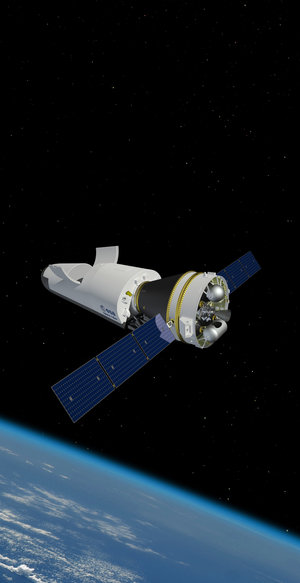NanoAvionics Partners with LANL on Pioneering ESRA Space Mission
Thursday, 01 February 2024 20:44 Kongsberg NanoAvionics US, a leader in smallsat mission integration, has entered into a new partnership with Los Alamos National Laboratory (LANL), a premier U.S. science and technology institution, for the development of a CubeSat mission aimed at enhancing our understanding of space radiation.
The mission, designated the Experiment for Space Radiation Analysis (ESRA), will employ a 12U C
Kongsberg NanoAvionics US, a leader in smallsat mission integration, has entered into a new partnership with Los Alamos National Laboratory (LANL), a premier U.S. science and technology institution, for the development of a CubeSat mission aimed at enhancing our understanding of space radiation.
The mission, designated the Experiment for Space Radiation Analysis (ESRA), will employ a 12U C Ariane 6 test model cryogenic system disconnection
Thursday, 01 February 2024 14:30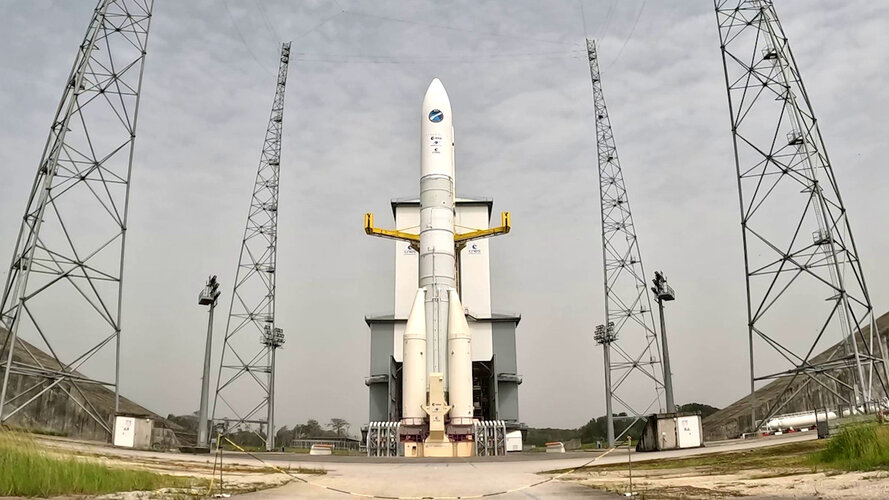 Video:
00:01:18
Video:
00:01:18
Teams from ESA, France’s space agency CNES and ArianeGroup successfully completed the disconnection and retraction of the Ariane 6 cryogenic systems on 30 January 2024.
These operations mark the start of dismantling the Ariane 6 test model to make way for its first launch. The combined test phase for Ariane 6 using propellants is now over and the European rocket is on track for its inaugural launch.
The test model that is on the launch pad at Europe’s Spaceport in Kourou, French Guiana, stands 62 m high. It is exactly the same as the ‘production model’ Ariane 6 rockets
XMM-Newton spots a black hole throwing a tantrum
Thursday, 01 February 2024 12:00
Black holes are like temperamental toddlers. They spill food all the time, but ESA’s XMM-Newton has caught a black hole in the act of ‘flipping over the table’ during an otherwise civilised meal.
This act prevents the galaxy surrounding the black hole from forming new stars, giving us insight into how black holes and galaxies co-evolve.
Picturing Proba-3 for safer double satellite control
Thursday, 01 February 2024 09:11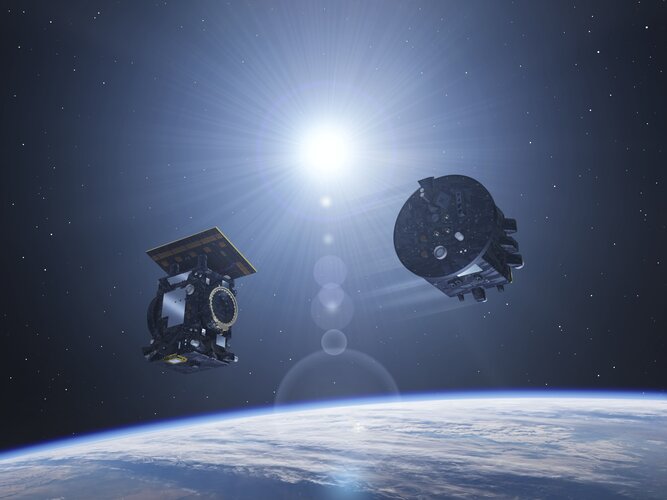
Controlling a single satellite in orbit is tough enough, but to oversee a pair of satellites as they fly in close formation around one another is likely to be extremely challenging. To simplify oversight of ESA’s coming double-satellite Proba-3 mission, its team is making sure controllers will obtain visualisations of the satellites’ relative positions in real time.
ESA’s cloud mission in the limelight
Thursday, 01 February 2024 09:00
Dedicated to delivering a wealth of new information on exactly how clouds and aerosols affect Earth’s climate, ESA’s EarthCARE satellite has had the chance to show off prior to engineers embarking upon the careful task of packing it up for its journey to the launch site in the US.
Human vs. hover-machine
Thursday, 01 February 2024 09:00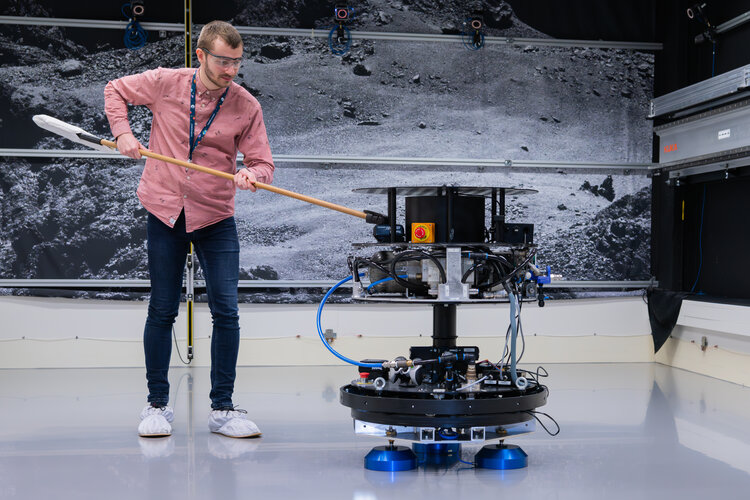 Image:
Human vs. hover-machine
Image:
Human vs. hover-machine Cupola in 360° – Muninn
Thursday, 01 February 2024 09:00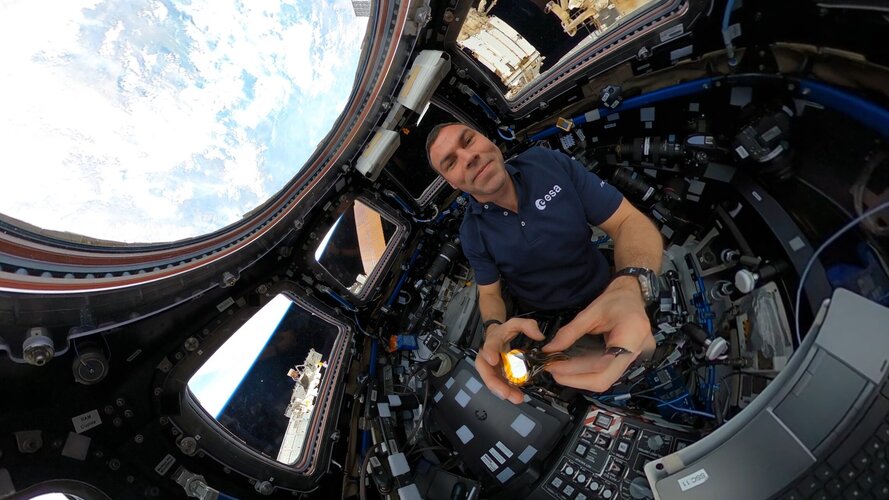 Video:
00:00:36
Video:
00:00:36
Join ESA project astronaut Marcus Wandt inside the seven-windowed cupola, the International Space Station's "window to the world" and and pan around to enjoy the view.
The ESA - European Space Agency-built Cupola is the favourite place of many astronauts on the International Space Station. It serves not only as a unique photo spot, but also for observing robotic activities, arriving spacecraft and spacewalks.
Marcus was launched to the International Space Station on the Dragon spacecraft as part of Axiom Mission 3 on 18 January 2024. His two-week mission on board is known as Muninn.
Follow Marcus’s journey on the
Two Scandinavians in space
Thursday, 01 February 2024 08:36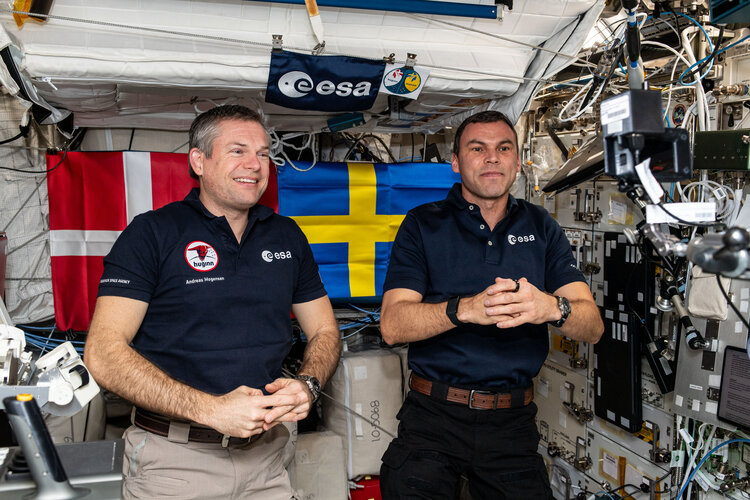 Image:
Two Scandinavians in space
Image:
Two Scandinavians in space Rocket Lab starts busy year with successful booster recovery
Wednesday, 31 January 2024 21:20 Rocket Lab USA, Inc. (NASDAQ: RKLB) has started its 2024 mission roster with a landmark Electron launch. The mission, named 'Four Of A Kind,' was dedicated to deploying space situational awareness (SSA) satellites for Spire Global, Inc. on behalf of NorthStar Earth & Space. The successful launch from Rocket Lab Launch Complex 1 in New Zealand marks a significant step forward in monitoring near-Earth space
Rocket Lab USA, Inc. (NASDAQ: RKLB) has started its 2024 mission roster with a landmark Electron launch. The mission, named 'Four Of A Kind,' was dedicated to deploying space situational awareness (SSA) satellites for Spire Global, Inc. on behalf of NorthStar Earth & Space. The successful launch from Rocket Lab Launch Complex 1 in New Zealand marks a significant step forward in monitoring near-Earth space Northrop Grumman marks 20th ISS resupply mission with Cygnus launch
Wednesday, 31 January 2024 21:20 Northrop Grumman has launched its 20th cargo resupply mission to the International Space Station (ISS), solidifying its role in ongoing space logistics and exploration. The mission, designated NG-20, was carried out using SpaceX's renowned Falcon 9 rocket. This launch, taking place from Space Launch Complex 40 at Cape Canaveral Space Force Station in Florida, marks a significant milestone in Nor
Northrop Grumman has launched its 20th cargo resupply mission to the International Space Station (ISS), solidifying its role in ongoing space logistics and exploration. The mission, designated NG-20, was carried out using SpaceX's renowned Falcon 9 rocket. This launch, taking place from Space Launch Complex 40 at Cape Canaveral Space Force Station in Florida, marks a significant milestone in Nor Rocketlab launches Spire and NorthStar Space Sustainability mission with dedicated flight
Wednesday, 31 January 2024 21:20 Spire Global, Inc. (NYSE: SPIR), a leader in delivering space-based data and analytics services, has successfully launched the first commercial satellite constellation for Space Situational Awareness (SSA) in partnership with NorthStar Earth and Space. This milestone event took place on January 31, 2024, at 6:35 pm NZST, from Rocket Lab's Launch Complex 1 in New Zealand.
The launch, aptly
Spire Global, Inc. (NYSE: SPIR), a leader in delivering space-based data and analytics services, has successfully launched the first commercial satellite constellation for Space Situational Awareness (SSA) in partnership with NorthStar Earth and Space. This milestone event took place on January 31, 2024, at 6:35 pm NZST, from Rocket Lab's Launch Complex 1 in New Zealand.
The launch, aptly Sidus Space's 3D Hybrid satellite 'LizzieSat' ready for launch
Wednesday, 31 January 2024 21:20 Sidus Space (NASDAQ: SIDU), a company specializing in Space and Data-as-a-Service, has completed the launch preparation of its new satellite, LizzieSat, at the Astrotech Space Operations facility at Vandenberg Space Force Base in California. The satellite has been prepared for launch by attaching it to the separation system and the launch vehicle adapter for SpaceX's Falcon 9 rocket. This marks
Sidus Space (NASDAQ: SIDU), a company specializing in Space and Data-as-a-Service, has completed the launch preparation of its new satellite, LizzieSat, at the Astrotech Space Operations facility at Vandenberg Space Force Base in California. The satellite has been prepared for launch by attaching it to the separation system and the launch vehicle adapter for SpaceX's Falcon 9 rocket. This marks SmartSat and New Zealand Space Agency Forge Partnership for Space Sector Innovation
Wednesday, 31 January 2024 21:20 In a significant development for the Australasian space sector, SmartSat Cooperative Research Centre (SmartSat), Australia's leading space research centre, has entered into a formal partnership with the New Zealand Space Agency (NZSA). This collaboration, marked by the signing of a Memorandum of Understanding (MoU), aims to catalyze the growth of the space industries in both Australia and New Ze
In a significant development for the Australasian space sector, SmartSat Cooperative Research Centre (SmartSat), Australia's leading space research centre, has entered into a formal partnership with the New Zealand Space Agency (NZSA). This collaboration, marked by the signing of a Memorandum of Understanding (MoU), aims to catalyze the growth of the space industries in both Australia and New Ze Reticulate Micro's new division, Reticulate Space, brings VAST tech to satellite communications
Wednesday, 31 January 2024 21:20 In a significant expansion of its technological frontiers, Reticulate Micro, Inc. has announced the establishment of Reticulate Space, a new business segment aimed at revolutionizing multi-orbit satellite communications management. This move marks a strategic enhancement for the company, focusing on defense and a select range of commercial opportunities.
b>Reticulate Space's Strategic Mar
In a significant expansion of its technological frontiers, Reticulate Micro, Inc. has announced the establishment of Reticulate Space, a new business segment aimed at revolutionizing multi-orbit satellite communications management. This move marks a strategic enhancement for the company, focusing on defense and a select range of commercial opportunities.
b>Reticulate Space's Strategic Mar 
